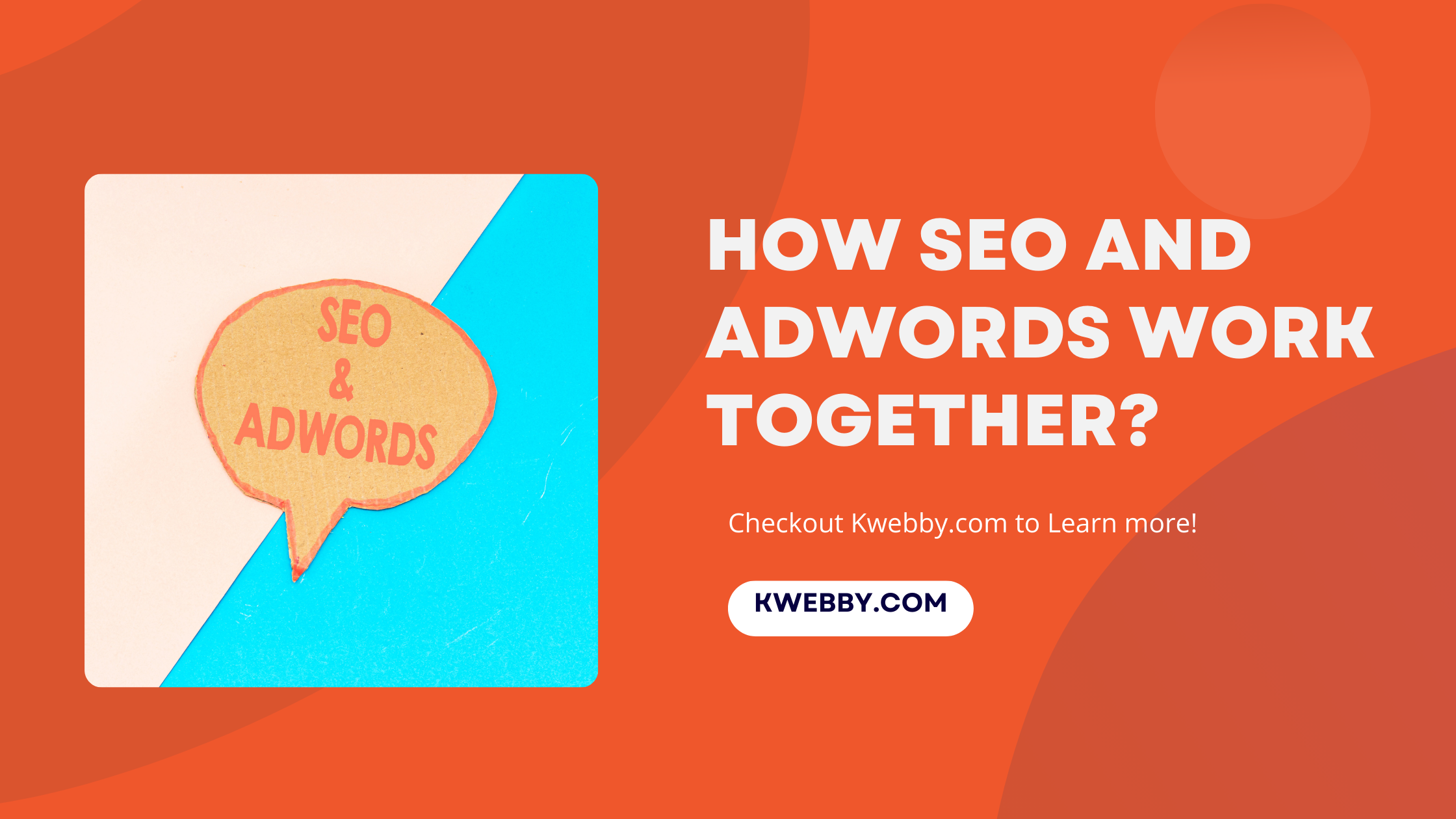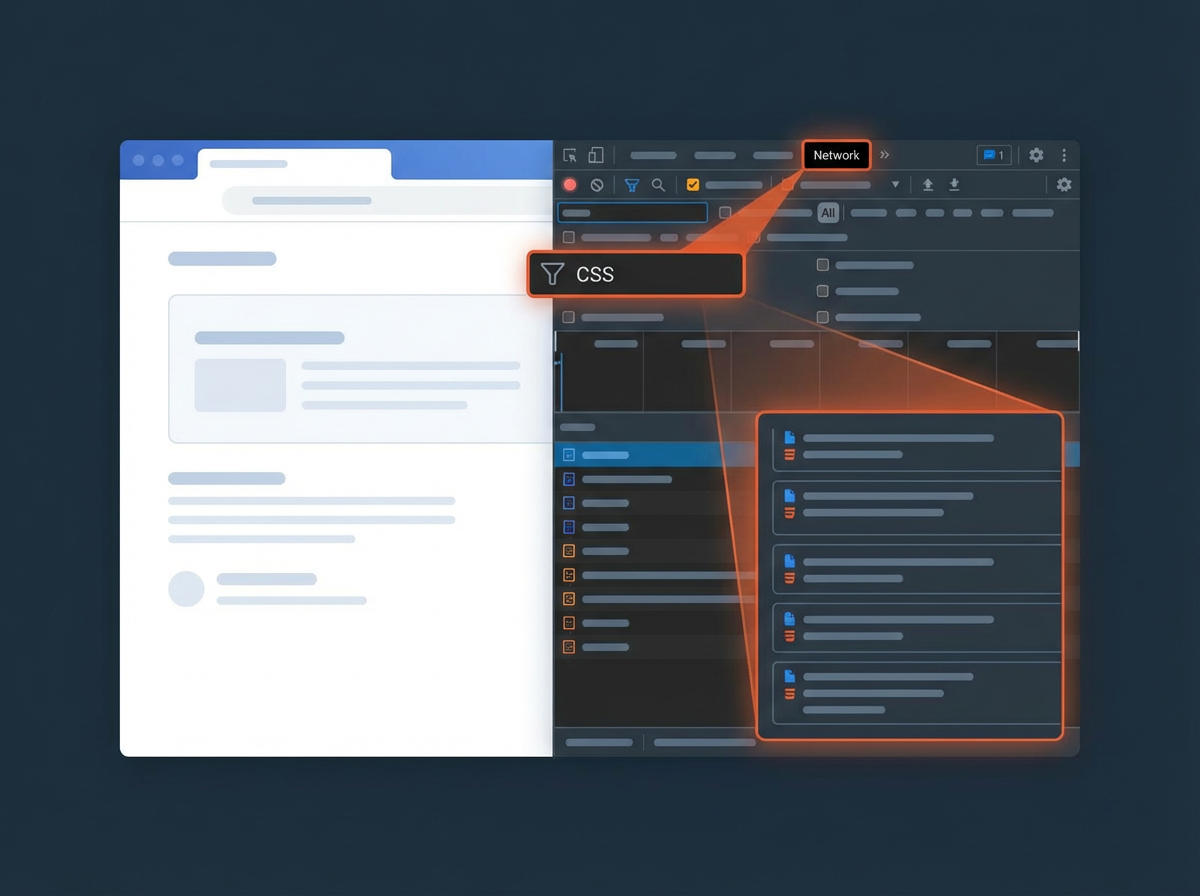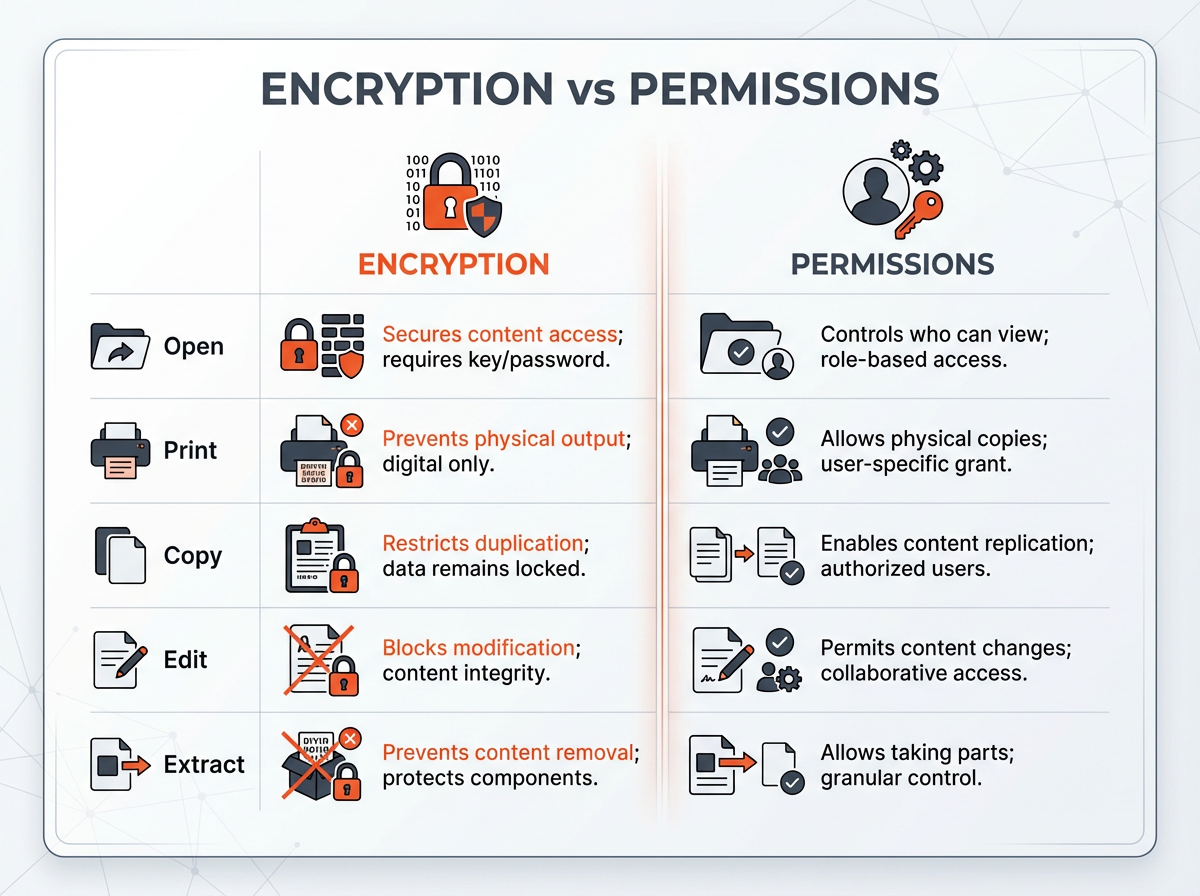In today’s digital age, mastering the art of blending Search Engine Optimization (SEO) with Google Ads (formerly Google AdWords) is vital for any comprehensive digital marketing strategy.
SEO, the backbone of increasing organic search visibility and traffic, and Google Ads, a robust platform for reaching potential customers through paid advertisements, together form a synergistic approach that can significantly amplify your digital marketing efforts.
This collaboration not only enhances search engine visibility and search engine rankings but also optimizes both organic and paid search results. For businesses and marketers looking to capitalize on these benefits, understanding how to seamlessly integrate SEO and Google Ads into a unified strategy is crucial.
This article dives deep into the mechanics of how SEO and Google Ads work together, providing actionable insights and strategies to maximize their collective impact on your marketing.
Google March Update 2024 – Expired Domains Abuse, Parasite SEO and More
What is Search Engine Optimization?
Search Engine Optimization (SEO) involves refining web content to bolster a website’s prominence within search engine listings. This process employs a variety of methods, including the strategic insertion of targeted keywords throughout the site’s content and honing the framework of internal links, aimed at elevating the site’s position within the search engine algorithms.
By enhancing a website’s ranking, SEO endeavors to propel it to the forefront of search engine results pages (SERPs), thereby augmenting the likelihood of attracting clicks and interaction from prospective visitors.
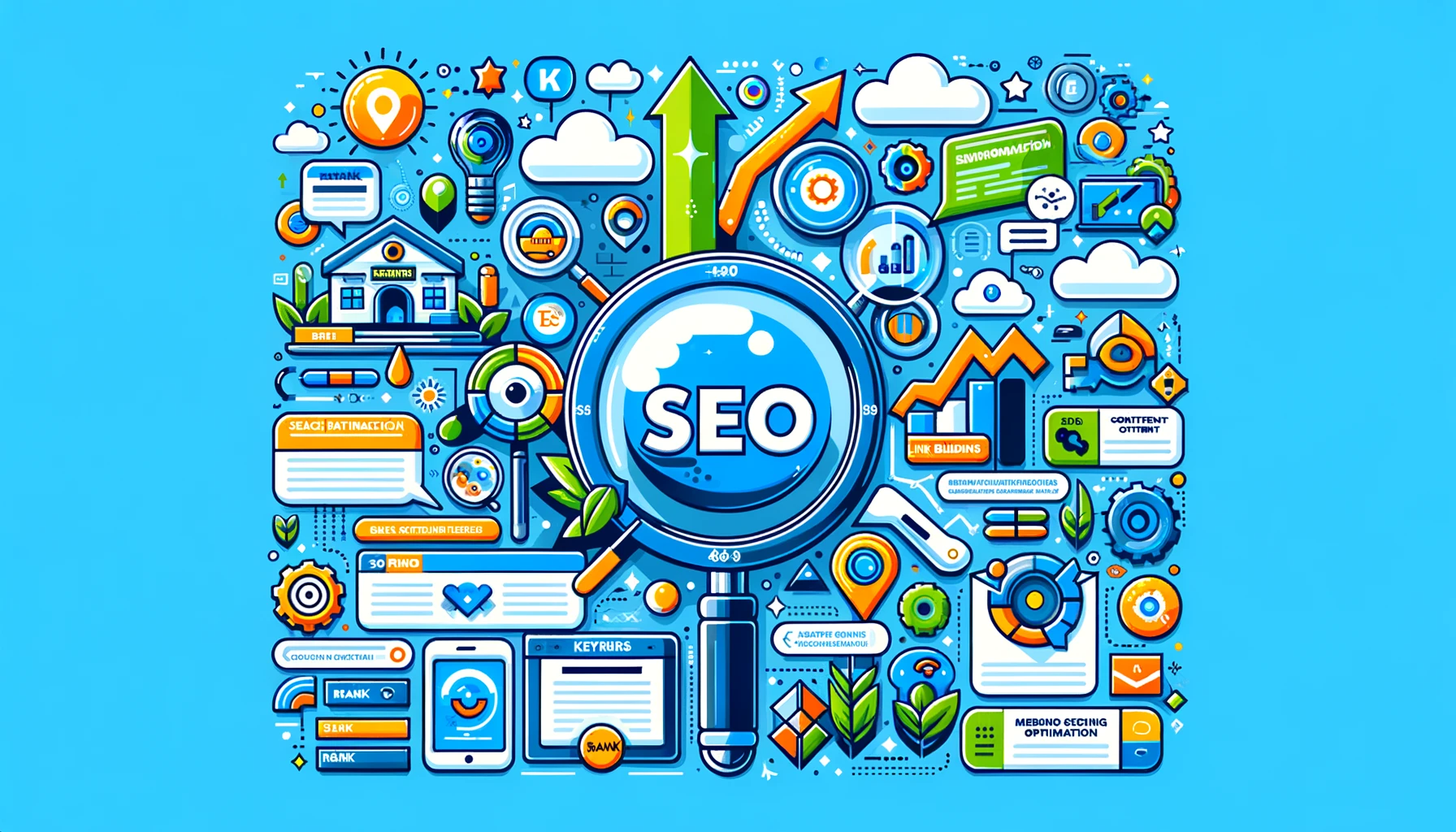
This technique is pivotal for driving organic traffic and is an integral component of a comprehensive digital marketing strategy, ensuring that a site is visible to potential customers and ranks well in Google search results.
What are Google Ads?
Google Ads is a sophisticated digital advertising service that enables businesses to reach their ideal customers through targeted advertising.
This service allows for the placement of ads within search engine results pages (SERPs), various websites, and mobile applications, tailoring these ads to users based on their previous searches and interest profiles.
The financial model primarily operates on a cost-per-click (CPC) or pay per click basis, where businesses incur costs only when their ads are actively clicked by users. This mechanism is pivotal in driving targeted traffic and increasing visibility in search results, serving as a critical component of an effective digital marketing strategy.
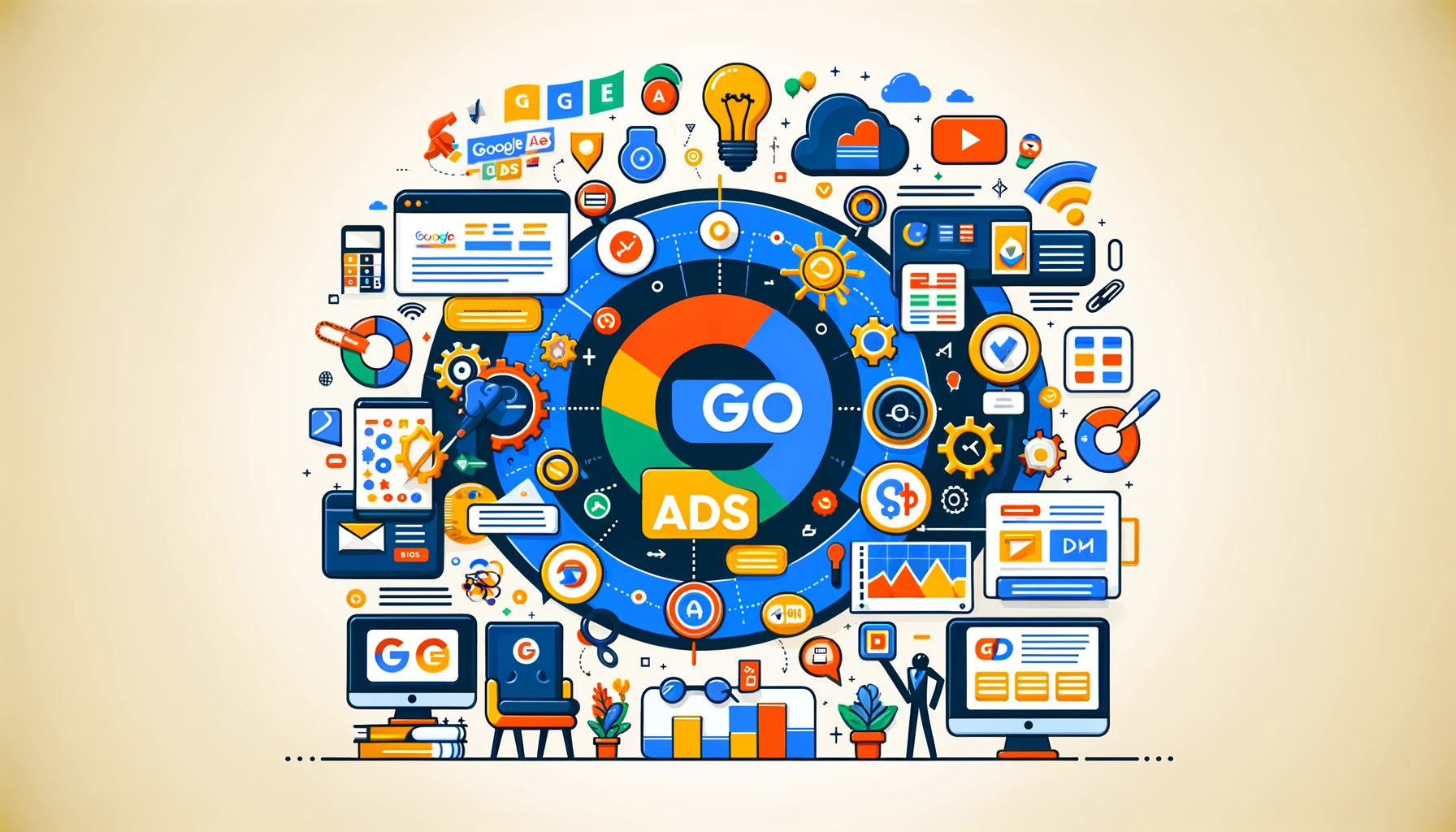
By leveraging Google Ads in concert with strategic search engine optimization (SEO) efforts, businesses can enhance their presence in both paid and organic search results, effectively reaching potential customers and improving their overall search engine rankings.
Through the integration of targeted keywords, careful keyword research, and optimization of landing pages, businesses can maximize the efficacy of their Google Ads campaigns, contributing to a more comprehensive and successful digital marketing strategy.
5 Ways Web 3.0 Will Affect Advertising
How Google Ads and SEO work together and improve each other?
Both SEO and Google Ads fundamentally utilize targeted keywords in their strategies, employing a test-and-learn approach with Google Ads to evaluate keyword effectiveness. This enables the identification of high-performing keywords for integration into SEO content, thus enhancing search engine optimization efforts.
While Google Ads effectively draws users’ attention to your site, the real challenge lies in retaining them. Without engaging content, visitors might quickly bounce back, reducing the likelihood of conversions.
Here, SEO plays a crucial role in refining web pages, making the content more appealing and ensuring that a site not only attracts but also retains potential customers, encouraging them to complete purchases.
Further, leveraging successful keywords from SEO in your Google Ads campaigns can optimize your digital marketing strategy, improving your presence in search engine results pages (SERPs) and augmenting both paid and organic traffic.
This synergistic application of SEO and Google Ads amplifies search engine visibility, enriches user experience, and fosters an integrated approach to digital marketing, paving the way for higher organic rankings and increased effectiveness in targeting potential customers through both organic and paid search strategies.
Why Use Both SEO and AdWords Together
Since both heavily depend on each other, we might as well use both together and get the maximum returns out of our investment.
Trust Building
Users often hold organic search results in higher esteem compared to paid advertisements. Yet, the simultaneous visibility of a brand in both organic search results and paid search results on search engine results pages (SERPs) can significantly enhance the brand’s credibility.
This dual presence suggests to potential customers that the brand is established and trustworthy, rather than a transient entity relying solely on purchased Google Ads for visibility. Incorporating relevant keywords such as search engine optimization, digital marketing strategy, and organic traffic into both SEO and Google Ads work reinforces this trust.
This strategy underscores the importance of a comprehensively devised digital marketing plan that leverages both SEO and AdWords, elevating the brand’s stature in the competitive landscape of search engines, and underscores a commitment to a robust SEO strategy and digital marketing efforts.
Greater ROI (return on Investment)
While the investment in Search Engine Optimization (SEO) is generally lower than the costs associated with Google Ads, relying solely on SEO might mean overlooking the distinct advantages offered by Google AdWords.
By integrating SEO and Google AdWords into your digital marketing strategy, you can diminish your dependence on paid ads while concurrently making each ad more cost-effective, thus enhancing the value derived from your expenditure.
This combination not only aligns with target keywords, search engine results pages, and organic rankings but also leverages the strength of both SEO and Google Ads work together to optimize your presence across search engines.
Incorporating this dual approach into your comprehensive digital marketing strategy can result in a more efficient allocation of resources, increased search engine visibility, and an improved return on investment (ROI) by leveraging the synergy between paid search and organic traffic.
Builds Lasting Value
Google AdWords possesses the capability to swiftly augment traffic to your website, surpassing the pace of conventional SEO strategies. Nevertheless, this surge in traffic tends to dissipate once the advertising campaign concludes.
In contrast, search engine optimization (SEO) cultivates enduring value. Content optimized through SEO seamlessly collaborates with Google Ads, ensuring that visitors attracted by an advertisement campaign continue to engage with your site long after the conclusion of the campaign.
Key SEO practices, including link building, integrating relevant keywords from Google Search Console, and enhancing landing pages, alongside strategic Google Ads campaigns targeting specific keywords, contribute to a robust digital marketing strategy.
This combination not only improves search engine visibility and organic rankings on search engine results pages (SERPs) but also reinforces the relationship between SEO and Google Ads.
Through this synergy, businesses can maintain a consistent presence in both paid and organic search results, effectively retaining potential customers and maximizing the impact of digital marketing efforts.
Double exposure
Envision your brand prominently featured in both the organic search results through proficient search engine optimization (SEO) efforts and the highly targeted paid search results via Google AdWords campaigns.
This powerful combination not only elevates the chances of garnering increased clicks and engagement from your target audience but also solidifies your brand’s authority and trustworthiness in the competitive digital landscape.
It is comparable to the simultaneous use of a billboard and a newspaper advertisement, which guarantees your brand’s message is conveyed through various channels to potential customers.
By harmonizing the capabilities of both SEO and Google AdWords, your brand achieves an unparalleled level of visibility and dominance on search engine results pages (SERPs), significantly boosting your opportunities to engage with and captivate the attention of your target market.
Strategies For Making SEO And Ad Words Work Together
So, how can you utilize both together and make it work for you? Here’s how:
Create Relevant Content
The efficacy of your search engine optimization (SEO) and Google Ads initiatives is deeply rooted in the caliber and pertinence of your content. For SEO, this means crafting articles and web pages enriched with targeted keywords and tailored for high search engine rankings.
Conversely, Google Ads campaigns demand content that is not only precise but also compelling to your target audience. Producing content of such quality not only enhances your position on search engine results pages (SERPs), but it also draws more visitors to your website.
This increase in website traffic subsequently amplifies your conversion rates. Incorporating keywords such as search engine optimization, search engine results, digital marketing, organic traffic, paid ads, and search engine marketing into your content creation strategy will ensure that your efforts in both SEO and Google Ads work in harmony, leveraging the synergies between them to maximize your digital marketing strategy and improve organic rankings.
This approach positions you advantageously within search engines, ultimately benefiting your comprehensive digital marketing strategy by boosting both reach and engagement with potential customers.
Use Keywords Strategically
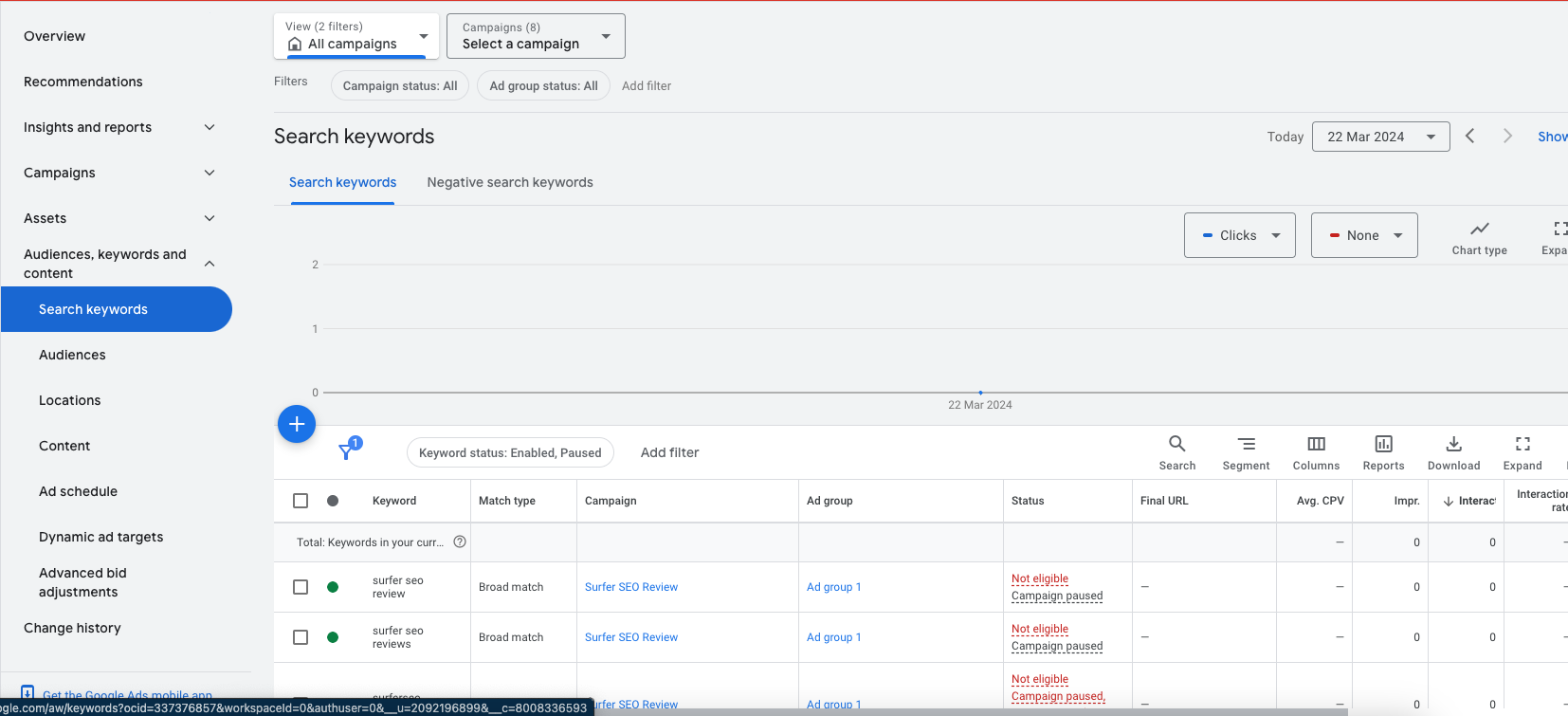
Target keywords act as a critical hinge for the success of both SEO efforts and Google Ads campaigns. Maximizing the impact of your marketing strategy involves ensuring these keywords are closely aligned with your product or service and resonate with the queries of your target audience.
Delving into competitive keyword research provides insights into the target keywords and keyword relevance strategies employed by your competitors, giving you a clear edge. With this strategic intelligence, you’re better positioned to identify the most potent keywords for your digital marketing efforts, thus streamlining your focus towards the keywords that drive tangible results.
This refined strategy in using targeted keywords and specific keywords not only optimizes your presence on search engine results pages (SERPs) but also bolsters both your SEO and Google AdWords campaigns.
It ensures your digital marketing resources are utilized efficiently, avoiding the pitfalls of expending them on keywords that fail to contribute to your Google search engine visibility or organic rankings, thereby enhancing both your organic traffic and paid search results.
By systematically applying keyword performance knowledge gained from tools like Google Search Console and integrating SEO and Google Ads work, you ensure a cohesive and comprehensive digital marketing strategy that effectively leverages the dynamics of search engine algorithms and user behavior to your advantage.
Leverage Long-Tail Keywords
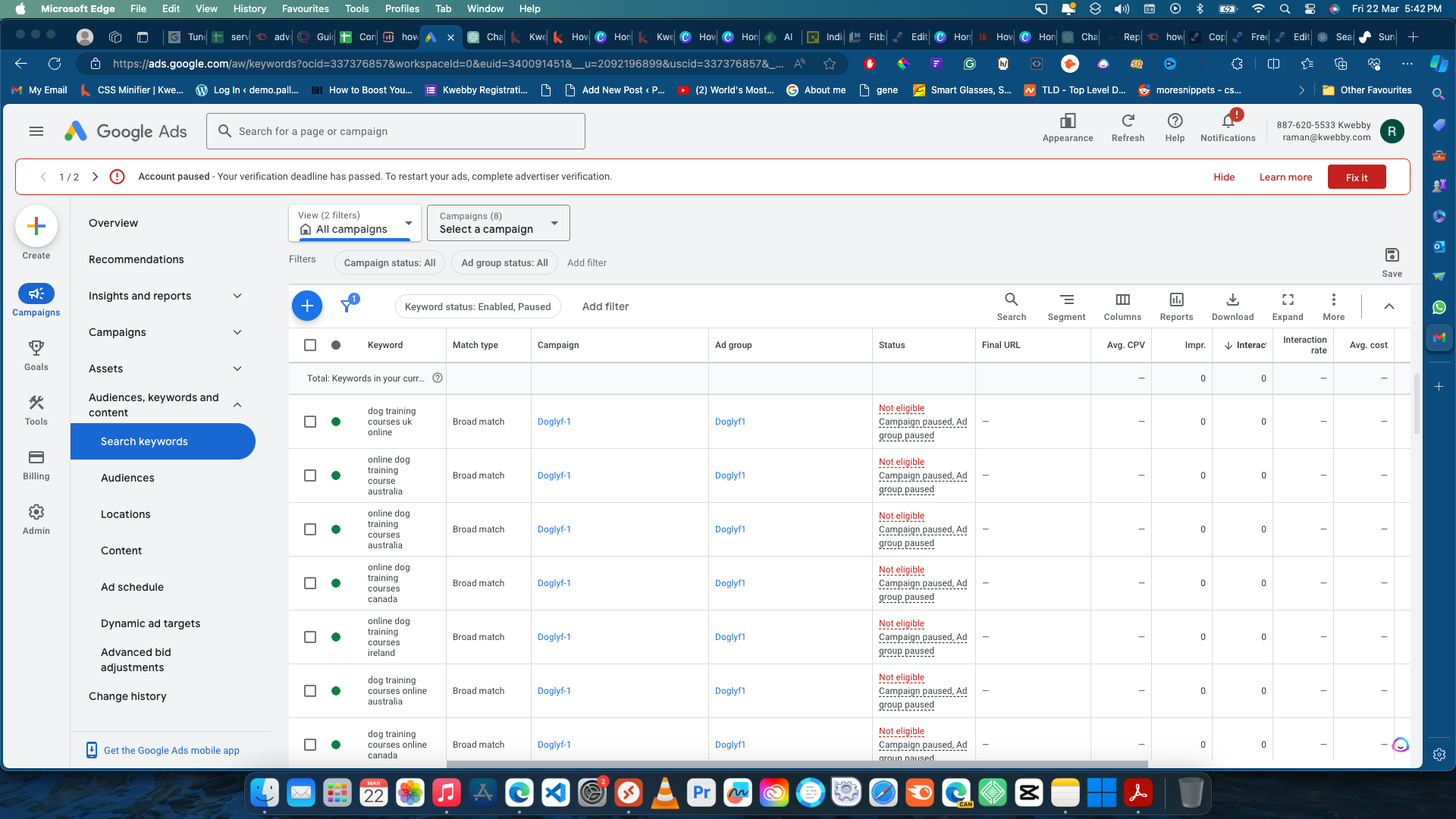
Utilizing long-tail keywords — specific phrases typically exceeding three words — plays a critical role in refining both SEO strategy and Google Ads initiatives. Despite their lower search volume compared to broader keywords, long-tail keywords excel in driving targeted, relevant traffic likely to convert, thanks to their specificity.
Such keywords often face less competition, making them a cost-effective choice for bidding within Google Ads campaigns. This distinct nature of long-tail keywords aligns them closely with the search intent of the user, enhancing the potential for increased organic rankings and search engine results page presence.
The strategic adoption of long-tail keywords into your digital marketing efforts, including landing pages and PPC ads, substantially benefits both SEO and Google Ads work by promoting more precise targeting and engagement with potential customers, ultimately fostering a comprehensive digital marketing strategy that capitalizes on user intent and behavior for improved search engine visibility and performance.
Utilize Link Building
Link building emerges as a pivotal element in bridging SEO efforts and Google Ads strategies, enhancing the visibility and positioning of your website within search engine results pages (SERPs). The cultivation of high-quality, authoritative backlinks directs more traffic to your site, uplifting its stature and prominence in search outcomes.
Techniques for constructing these vital links include engaging in guest blogging on reputable platforms, registering your site with esteemed directories, and generating share-worthy content that naturally attracts external links.
By integrating strategic link building into your digital marketing endeavors, you contribute significantly to a more robust digital marketing strategy. This practice not only supports your SEO and Google Ads operations but also enriches your site’s search engine rankings and performance in search results.
Utilizing relevant keywords and ensuring your content aligns with user intent enhances the efficacy of your link-building initiatives, further solidifying the synergy between SEO strategy and paid search efforts, ultimately driving more nuanced traffic and engagement from potential customers.
Optimize Landing Pages
Optimizing your landing pages is a crucial component in harmonizing your SEO and Google Ads efforts, thereby paving the way for a synchronized digital marketing strategy. This optimization process involves ensuring your landing pages prominently feature the targeted keywords pertinent to both your SEO campaigns and Google Ads initiatives, thus enhancing your search engine visibility and organic rankings.
It’s imperative these pages are designed to be easily accessible and indexable by search engines, optimizing their performance across both desktop and mobile platforms. Additionally, the content of your landing pages must align with the specific ads they are linked to, embodying relevancy and delivering a clear, compelling call to action (CTA) that guides potential customers towards your desired outcome.
By focusing on these elements, you fortify the synergy between your search engine optimization (SEO) efforts and PPC advertising, driving both paid traffic and organic search results, and effectively bolstering your overall digital marketing strategy.
Monitor Changes in Search Results
Search engine algorithms are in a state of perpetual flux, underscoring the importance of vigilance concerning shifts in search engine results pages (SERPs) and keeping abreast of the latest functionalities or modifications introduced by Google Ads.
This proactive monitoring is pivotal for detecting variances in keyword standings, ensuring that your marketing efforts consistently focus on the most efficacious keywords for your campaigns. Furthermore, keeping an eye on adjustments within search engine results can unveil detrimental elements that might undermine your SEO and Google Ads efforts, such as suboptimal keyword choices or stale content.
Leveraging this approach means your campaigns will consistently outpace competitors, maintaining a cutting-edge stance in search engine optimization (SEO), Google AdWords tactics, and ensuring an integrated digital marketing strategy.
It empowers you to optimize your search engine marketing, enhancing both organic traffic and paid traffic efficacy, while reinforcing your site’s visibility across search engines and contributing to a more comprehensive digital marketing strategy.
By incorporating keyword data from Google Search Console and analyzing PPC data, you can refine your SEO and AdWords work, driving increased traffic and engagement with potential customers, thus establishing a seamless synergy between search engine optimisation and paid advertising.
Analyze and Track Performance
Enhancing the efficacy of your search engine optimization (SEO) and Google Ads campaigns necessitates a continual assessment and monitoring of essential performance indicators. For your SEO efforts, it’s crucial to track metrics such as organic search visibility, the influx of organic traffic, and the rankings of targeted keywords to gauge the impact of your strategies.
Similarly, for your Google Ads operations, analyzing the click-through rate (CTR), cost per click (CPC), and the conversion rate provides insights into the effectiveness of your paid ads. This continuous evaluation helps identify the strategies that yield the best results and pinpoint areas for optimization or realignment, ensuring that your digital marketing resources are utilized efficiently.
This meticulous approach to tracking and analysis is vital in harmonizing your SEO and Google Ads undertakings, contributing to a comprehensive digital marketing strategy that leverages both organic and paid search to maximize search engine visibility and engagement with your target audience.
By integrating insights from Google Analytics and focusing on SEO campaigns and Google Ads work geared towards search engine results pages, this process assists in refining your overall marketing strategy, optimizing for both search engines and the specific needs of potential customers.
Conclusion
In conclusion, effectively integrating SEO and Google Ads within your digital marketing strategy unlocks a potent synergy, significantly enhancing your brand’s visibility on search engine results pages (SERPs). This comprehensive digital marketing strategy, combining the strengths of search engine optimization and paid advertising, ensures a wider reach to your target audience, improves organic rankings, and drives increased paid traffic.
By focusing on relevant keywords, optimizing landing pages, and aligning SEO efforts with Google Ads campaigns, businesses can maximize their presence on search engines, ensuring a consistent and engaging user experience.
Leveraging tools like Google Search Console and Google Analytics further refines this approach, allowing for targeted keyword research, analysis of PPC data, and adaptation to search engine algorithms.
Ultimately, this concerted effort between SEO and AdWords not only drives organic and paid search success but also fosters a dynamic online presence that engages potential customers and propels your digital marketing efforts toward achieving measurable business outcomes.
Test your knowledge
Take a quick 5-question quiz based on this page.







